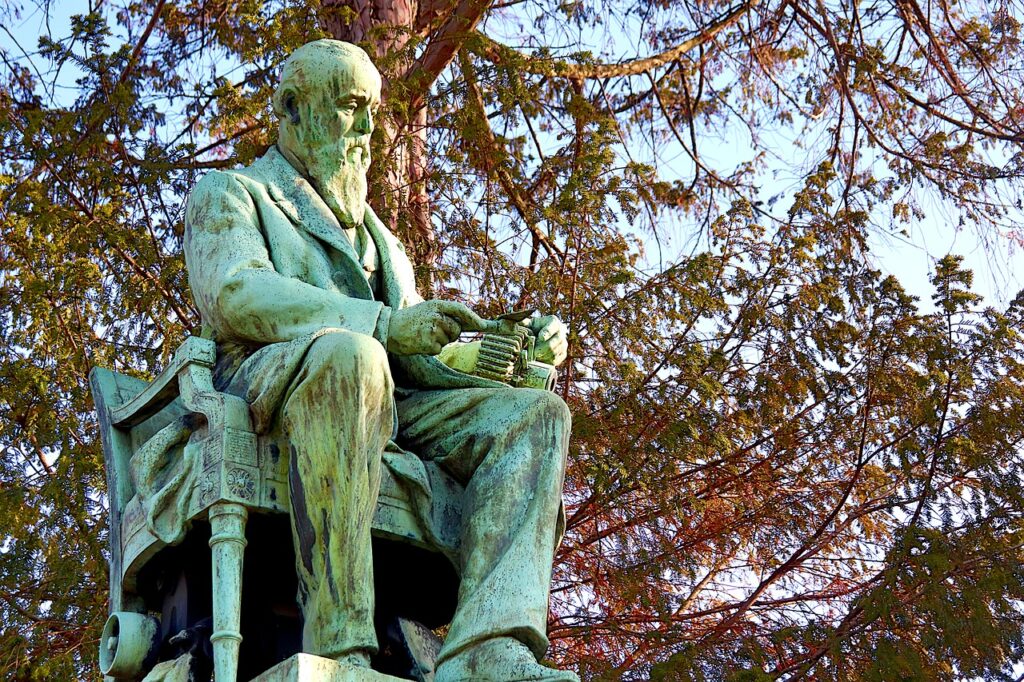Have you ever experienced an unexpected discomfort in your beard that left you wondering, “Why does my beard hurt?” If so, you’re not alone. Many men have encountered this puzzling phenomenon and are left searching for answers. In this article, we will explore the potential causes behind this beard pain and help you understand how to alleviate it, allowing you to enjoy your facial hair without any discomfort. So let’s uncover the mysteries of why your beard might be causing you pain and find practical solutions to make it a thing of the past.

Common Causes of Beard Pain
Ingrown Hairs
One common cause of beard pain is ingrown hairs. When a hair follicle becomes trapped underneath the skin instead of growing outward, it can cause discomfort, redness, and inflammation. Ingrown hairs often occur due to improper shaving techniques or genetics. To alleviate beard pain caused by ingrown hairs, avoid shaving too closely and exfoliate regularly to remove dead skin cells and promote hair growth in the right direction.
Dry Skin
Dry skin can also lead to beard pain. When the skin underneath your beard lacks moisture, it can become flaky, itchy, and irritated. This can make your beard feel uncomfortable and it may even cause the hair strands to become brittle and prone to breakage. To combat dry skin, use a gentle beard shampoo and conditioner to keep your beard clean without stripping away natural oils. Additionally, regularly apply a beard oil or moisturizer to hydrate and nourish the skin.
Folliculitis
Folliculitis is an infection of the hair follicles that can result in painful, red bumps on the skin. It occurs when bacteria or fungi enter the hair follicle and cause inflammation. This condition can be caused by poor hygiene, excessive sweating, or using dirty grooming tools. To ease beard pain caused by folliculitis, it is important to maintain proper hygiene by washing your beard regularly with a gentle cleanser. Avoid touching or picking at the affected areas to prevent further irritation.
Beard Rash
Beard rash is another common cause of beard pain. It refers to the irritation and redness that can develop from rubbing or chafing of the skin beneath your beard. This can occur due to friction from rough materials, repeated scratching, or exposure to irritants such as certain grooming products or environmental factors. To alleviate beard rash, choose soft and breathable fabrics for scarves or shirts that come into contact with your beard. Additionally, consider using gentle and hypoallergenic grooming products to minimize the risk of irritation.
Beard Dandruff
Beard dandruff, also known as “beardruff,” is the flaking of dry skin underneath the beard. It can cause itching, redness, and discomfort. Beard dandruff is often the result of a dry scalp or seborrheic dermatitis, a common skin condition characterized by oily or flaky patches. To relieve beard dandruff, incorporate regular exfoliation into your grooming routine to remove dead skin cells and promote healthy cell turnover. Additionally, use a specialized beard shampoo that is formulated to moisturize the skin and reduce dandruff.
Tugging or Pulling
Sometimes, beard pain can be self-inflicted due to tugging or pulling on the beard hairs. This can happen unintentionally when grooming, scratching, or even just absentmindedly playing with your beard. The repetitive pulling motion can cause the hairs to become stressed and lead to discomfort. To reduce beard pain from tugging or pulling, practice gentle grooming techniques, avoid excessive scratching, and try to be mindful of any habits that may contribute to the problem.
Allergic Reactions
Another potential cause of beard pain is an allergic reaction to certain grooming products or environmental allergens. Some individuals may be sensitive to specific ingredients found in beard oils, balms, or shampoos, leading to irritation and discomfort. Additionally, exposure to pollen, dust mites, or other airborne allergens can trigger allergic reactions that affect the skin beneath the beard. If you suspect an allergic reaction, discontinue the use of any potentially irritating products and consult with a dermatologist to identify the allergen and find suitable alternatives.
Sinusitis
Sinusitis, or inflammation of the sinuses, can sometimes manifest as beard pain. When the sinuses become congested and inflamed, it can cause aching or pressure in the facial area, including under the beard. The pain may also be accompanied by other symptoms such as headaches, nasal congestion, or coughing. Treating sinusitis involves addressing the underlying cause, such as allergies, infections, or structural abnormalities. Consult with a medical professional to determine the best course of treatment for your sinusitis-related beard pain.
Cold Weather
Cold weather can wreak havoc on your beard, causing discomfort and pain. Exposure to biting winds and low temperatures can dry out the skin and hair, leading to itchiness and irritation. The cold air can also cause the blood vessels in your skin to constrict, reducing blood flow and making your beard feel sore or numb. To protect your beard in cold weather, consider wearing a scarf or face mask to shield it from harsh conditions. Applying a moisturizing beard oil or balm can also help keep the hair and skin hydrated.
Improper Beard Care
Lastly, improper beard care can contribute to beard pain. Neglecting to wash or groom your beard regularly can lead to a buildup of dirt, oils, and dead skin cells, which can cause itching, redness, and discomfort. To prevent beard pain caused by improper beard care, establish a regular grooming routine that includes washing, exfoliation, moisturizing, and trimming. Use high-quality beard products that suit your specific needs and avoid harsh chemicals or aggressive grooming techniques that can damage the hair and irritate the skin.
How to Relieve Beard Pain
Proper Beard Washing
Proper beard washing is essential for relieving beard pain. Use a gentle beard shampoo to cleanse your beard and remove any dirt, debris, or buildup. Massage the shampoo into your beard and rinse thoroughly with warm water. Avoid using hot water as it can strip away natural oils and further dry out the skin. After washing, pat your beard dry with a towel or allow it to air dry.
Exfoliation
Regular exfoliation is a crucial step in relieving beard pain. Exfoliating helps remove dead skin cells and unclogs the hair follicles, promoting healthier beard growth and reducing the risk of ingrown hairs. Use a beard scrub or a soft-bristled brush to gently exfoliate the skin underneath your beard. Be cautious not to scrub too vigorously, as it can cause further irritation.
Moisturizing
Moisturizing the skin underneath your beard is vital to alleviate beard pain. After washing and exfoliating, apply a moisturizer or beard oil to hydrate the skin and soften the beard hairs. Choose a product that contains natural moisturizing ingredients such as jojoba oil, argan oil, or shea butter. Massage the moisturizer or oil into your beard and skin, focusing on areas that feel dry or itchy.
Using Beard Oil or Balm
Using beard oil or balm can provide additional relief for beard pain. These products help nourish and condition the beard, making it softer and more manageable. Apply a few drops of beard oil to your palms, rub them together, and then distribute the oil evenly through your beard, starting from the roots to the tips. For longer beards, consider using a beard balm to provide extra hold and moisture.
Hot Compress
If you experience beard pain due to inflammation or discomfort, a hot compress can help provide relief. Soak a clean towel in warm water, wring out the excess, and gently press it against your beard area. The warmth helps soothe the muscles and increase blood circulation, promoting relaxation and reducing pain.
Gentle Beard Grooming
When grooming your beard, it is crucial to be gentle to avoid causing further pain or irritation. Use a wide-toothed comb or a beard brush with soft bristles to detangle and style your beard. Avoid combing or brushing your beard forcefully, as it can tug on the hairs and lead to discomfort. Trim your beard regularly to maintain its shape and prevent split ends, but be careful not to trim too closely and risk ingrown hairs.
Avoiding Rough Touch
Try to avoid touching or rubbing your beard excessively, as it can aggravate the skin and cause discomfort. If you have a habit of absentmindedly playing with your beard, consider redirecting your hands to a stress ball or another object. Be mindful of any jewelry or clothing that may catch on your beard and cause unnecessary pulling or tugging.
Seeking Medical Advice
If your beard pain persists or becomes severe, it may be necessary to seek medical advice. A dermatologist can examine your beard and the underlying skin to identify any potential issues and provide appropriate treatment. They can also offer guidance on suitable grooming products and techniques that best suit your specific situation.
Keeping Your Beard Clean and Dry
Maintaining clean and dry beard is essential to prevent and alleviate beard pain. Regularly wash your beard with a gentle cleanser or beard shampoo, ensuring it is free from dirt, oils, and bacteria. After washing, make sure to dry your beard thoroughly to prevent moisture from sitting on the skin and causing irritation. Use a clean towel or a hairdryer on a low heat setting to gently dry your beard.
Wearing Protective Gear in Cold Weather
When facing cold weather conditions, wearing protective gear can help prevent beard pain. Choose a scarf or face mask made of soft and breathable fabric to shield your beard from harsh winds and low temperatures. Avoid materials that may cause friction or irritation against your beard. Keep your beard and face warm by wrapping the scarf loosely and ensuring it doesn’t pull or tug on the hair.

Preventing Beard Pain in the Future
Proper Beard Hygiene
To prevent future beard pain, maintain proper beard hygiene. Regularly wash your beard with a gentle cleanser or beard shampoo to remove dirt, oils, and product buildup. A clean beard is less likely to develop irritation or discomfort.
Regular Trimming and Grooming
Regular trimming and grooming are essential to prevent beard pain caused by ingrown hairs, split ends, or tangled hair. Trim your beard to maintain a neat and manageable length, and regularly shape it to prevent the hair from growing unevenly or becoming unruly.
Using the Right Beard Products
Using the right beard products can make a significant difference in preventing beard pain. Choose high-quality, natural beard oils, balms, and shampoos that are suitable for your skin type and address your specific concerns. Avoid products with harsh chemicals or artificial fragrances that can irritate the skin.
Avoiding Harsh Chemicals and Irritants
Be mindful of the grooming products you use on your beard and avoid those that contain harsh chemicals or potential irritants. Check the ingredients list and opt for products with natural or organic ingredients whenever possible. Additionally, be cautious of any environmental factors or allergens that may trigger irritation, such as pollution or certain fabrics.
Maintaining a Healthy Lifestyle
Maintaining a healthy lifestyle can contribute to a healthier beard and reduce the risk of beard pain. Eat a balanced diet rich in vitamins and minerals, exercise regularly, and get enough sleep to support overall skin and hair health. Stay hydrated by drinking an adequate amount of water daily to keep your skin and beard hydrated.
Protecting Your Beard from Cold Weather
To prevent beard pain in cold weather, take the necessary steps to protect your beard from harsh conditions. Wear a scarf, face mask, or balaclava to shield your beard from freezing temperatures and wind. Apply a moisturizing beard oil or balm to keep the skin and hair hydrated, and avoid excess heat exposure that can further dry out the beard.
Getting Regular Check-ups
Regular check-ups with a dermatologist or healthcare provider can help identify and address any underlying issues that may contribute to beard pain. They can provide guidance on proper beard care, recommend suitable products for your specific needs, and ensure your overall skin and beard health are in optimal condition.
By following these tips and addressing the common causes of beard pain, you can alleviate discomfort, maintain a healthy beard, and enjoy a more enjoyable grooming experience. Remember to be patient with the process, as it may take some time to find the right solutions that work best for your beard and skin. Happy bearding!

